How to prevent users from accessing the 'about:flags' settings page on Microsoft Edge
Here's a great tip to prevent users from accessing and changing settings in the "about:flags" page for Microsoft Edge on Windows 10.
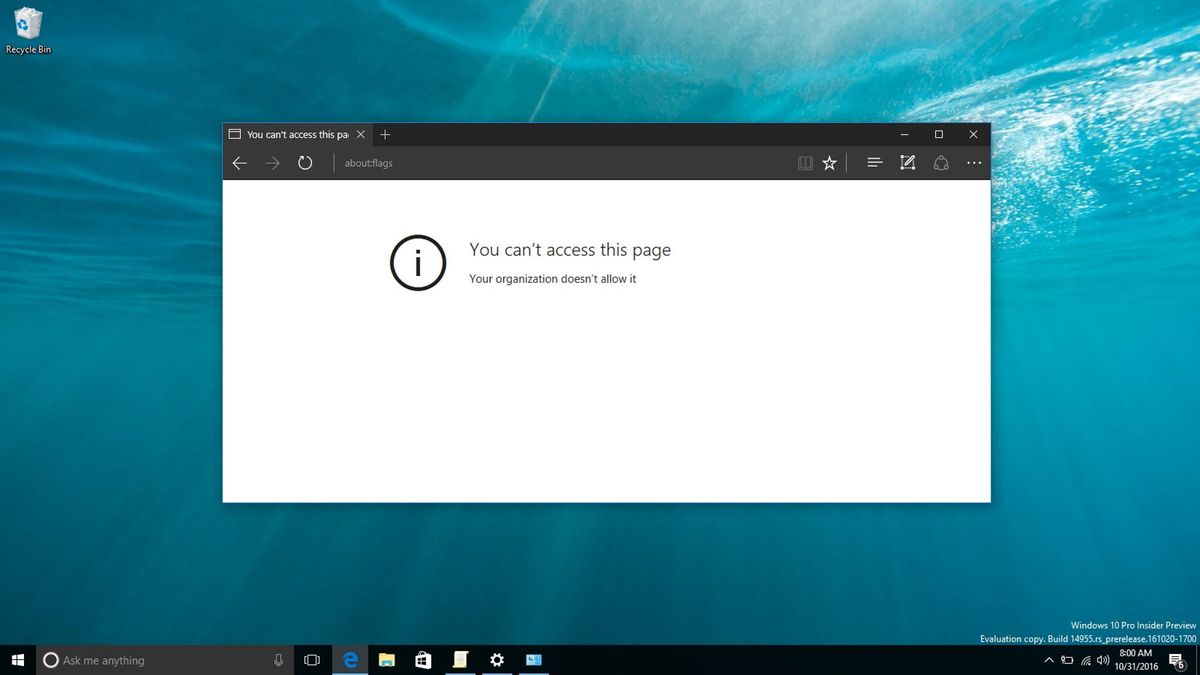
On Windows 10, now you get Microsoft Edge, which is the default web browser that replaces Internet Explorer, and it's been designed to tackle the tasks of the modern web with new features and a modern user interface. And of course, it's the browser that Microsoft has built to compete with the other major players, including Chrome and Firefox.
Among the new features, similar to the competition, Microsoft Edge includes a secret "flags" settings page, which contains advanced options and experimental features that developers can test to build a better web -- and advanced users can enable to tweak the performance of the web browser even further.
Even though the settings page is hidden from regular users, if you share your computer with other people, anyone can access and change these settings by simply typing about:flags in the address bar. The only problem is that the flags page contains many experimental features, which if they're enabled or disabled, they could sometime negatively affect the performance and functionality of Microsoft Edge.
Fortunately, Windows 10 includes at least two ways to block other users from accessing about:flags. In this Windows 10 guide, we'll walk you through the steps to use the Local Group Policy Editor and the Registry to prevent users from getting into Microsoft Edge's flags settings page on your computer.
How to disable 'about:flags' using Group Policy
If your computer is running Windows 10 Pro, Enterprise, or Education, you can easily edit one Group Policy object to disable access to the "about:flags" on Microsoft Edge.
- Use the Windows key + R keyboard shortcut to open the Run command.
- Type gpedit.msc and click OK to open the Local Group Policy Editor.
- Browse the following path:
Computer Configuration > Administrative Templates > Windows Components > Microsoft Edge

- On the right side, double-click the Prevent access to the about:flags page in Microsoft Edge policy.
- Change its setting to Enabled.
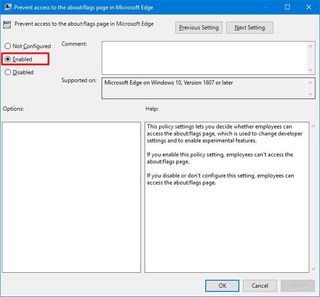
- Click Apply.
- Click OK to complete the task.
Once you completed the steps, you can test the new setting by opening Microsoft Edge, and trying to go to about:flags, which now should result in a "You can't access this page" message.
When you need to revert the changes, follow the steps mentioned above, but this time on step 5, changes the policy setting to Not configured.
Get the Windows Central Newsletter
All the latest news, reviews, and guides for Windows and Xbox diehards.
How to disable 'about:flags' using the Registry
If you're running Windows 10 Home, the Local Group Policy Editor won't be an available feature, but you can get the same result by tweaking the Registry.
Important: This is a friendly reminder to let you know that editing the registry is risky, and it can cause irreversible damage to your installation if you don't do it correctly. It's recommended to make a full backup of your PC before proceeding.
- Use the Windows key + R keyboard shortcut to open the Run command.
- Type regedit, and click OK to open the registry.
- Browse the following path:
HKEY_LOCAL_MACHINE\SOFTWARE\Policies\Microsoft - Right-click the Microsoft (folder) key, select New, and click on Key.
- Name the new key Microsoft Edge and press Enter.
- Right-click the Microsoft Edge (folder) key, select New, and click on Key.
- Name the new key Main and press Enter.
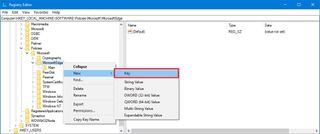
- Select the Main (folder) key, and right-click on the right side, select New, and click on DWORD (32-bit) Value.
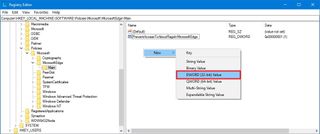
- Name the new DWORD PreventAccessToAboutFlagsInMicrosoftEdge and press Enter.
- Double-click the newly created DWORD and change its value from 0 to 1.
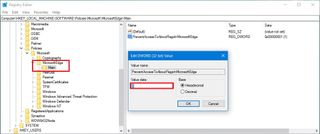
- Click OK.
- Close the Registry to complete the task.
Now launch Microsoft Edge and now trying to go to about:flags should result in a "You can't access this page" message.
In the case you change your mind, you can revert the changes at any time by using the same steps, but in step 3 browse this path HKEY_LOCAL_MACHINE\SOFTWARE\Policies\Microsoft\MicrosoftEdge\Main, and then change the PreventAccessToAboutFlagsInMicrosoftEdge DWORD value from 1 to 0.
Wrapping things up
The best part is that you're not only preventing access to the about:flags page when you're sharing your own account (not recommended) with other people, but the change will also be set globally to your computer regardless of the account anyone uses.
Do you share your computer with other users? If so, would you be blocking them access to the advanced flags page? Tell us in the comments below.
More Windows 10 resources
For more help articles, coverage, and answers on Windows 10, you can visit the following resources:
- Windows 10 on Windows Central – All you need to know
- Windows 10 help, tips, and tricks
- Windows 10 forums on Windows Central
Mauro Huculak has been a Windows How-To Expert contributor for WindowsCentral.com for nearly a decade and has over 15 years of experience writing comprehensive guides. He also has an IT background and has achieved different professional certifications from Microsoft, Cisco, VMware, and CompTIA. He has been recognized as a Microsoft MVP for many years.
